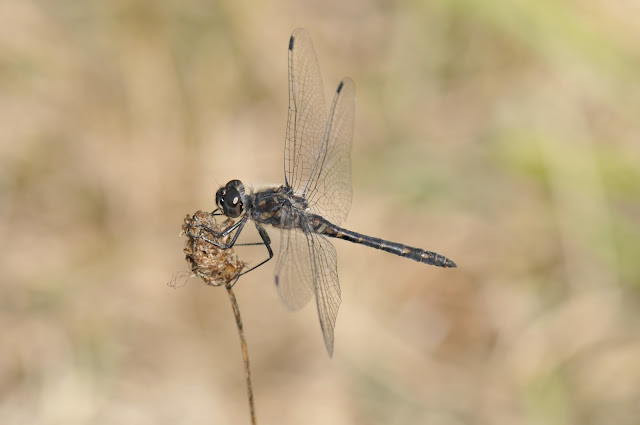Next up in our series of Species Spotlights is the Autumn Meadowhawk, the friendliest dragonfly in our area. It is also the subject of a delightful haiku:
Red dragonfly on my shoulder
calls me his friend.
Autumn has arrived.
In general, if a red dragonfly lands on you – especially in the Fall – you can be pretty sure it's an Autumn Meadowhawk.
Here's a photo of a female Autumn Meadowhawk:
She seems to be busy eating something she caught on the wing. Also, note her yellow legs. Formerly, this dragonfly was known as the Yellow-legged Meadowhawk, but the legs turn dark with age, and so the name was changed to Autumn Meadowhawk to recognize their late-flying proclivity.
That this individual is a female is clear by the lack of hamules on the underside of the second segment of the abdomen. This is indicated in the photo below:
You can also see the prominent "egg scoop" near the tip of the abdomen. The female dips the tip of her abdomen into the water, and collects a droplet of water that is held in place by the scoop – almost like a scoop of ice cream held in place by a cone. She then lays eggs into the droplet, and finally slams into the shoreline vegetation to dislodge the droplet. Another view of the egg scoop is shown below:
Here's an illustration of the egg-laying process:
Here are a few photos showing how easy it is to interact with Autumn Meadowhawks:
This is a wonderful dragonfly. I hope you can find them in your area.






























